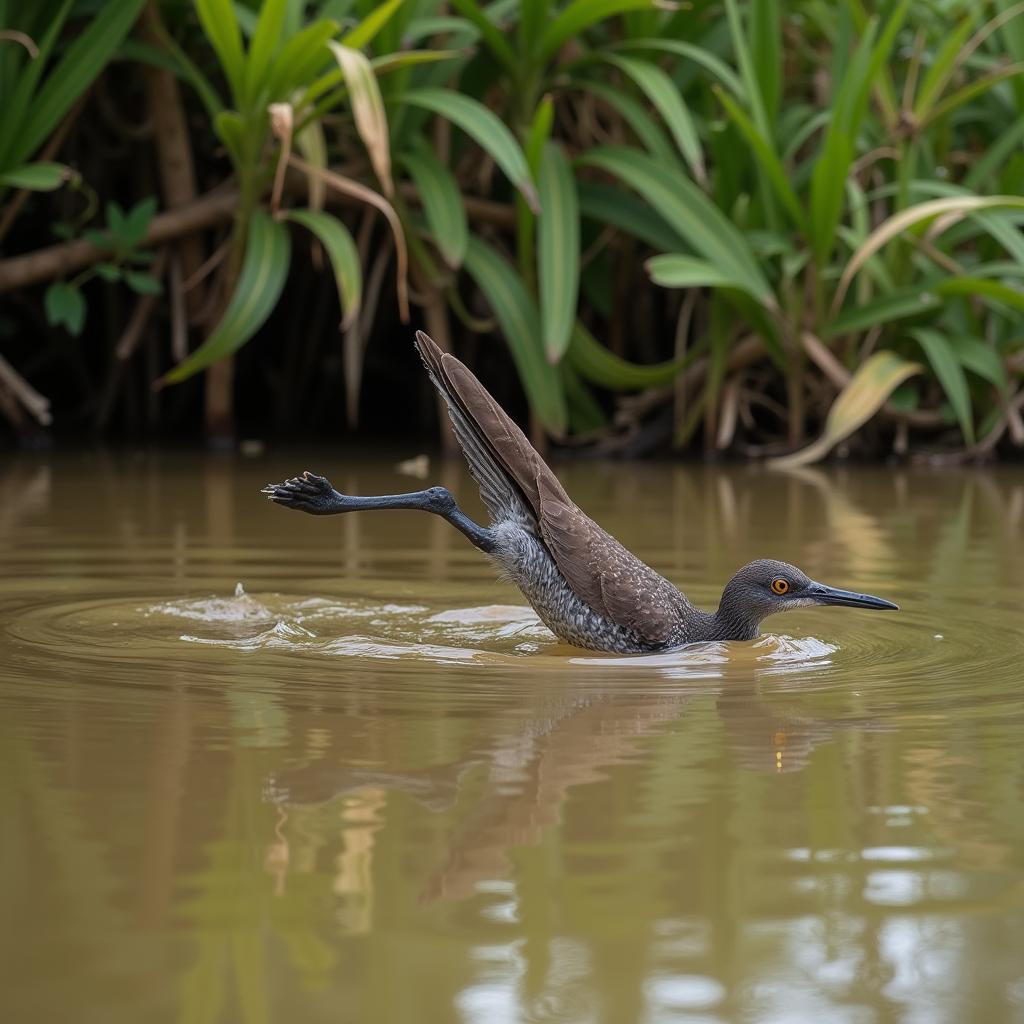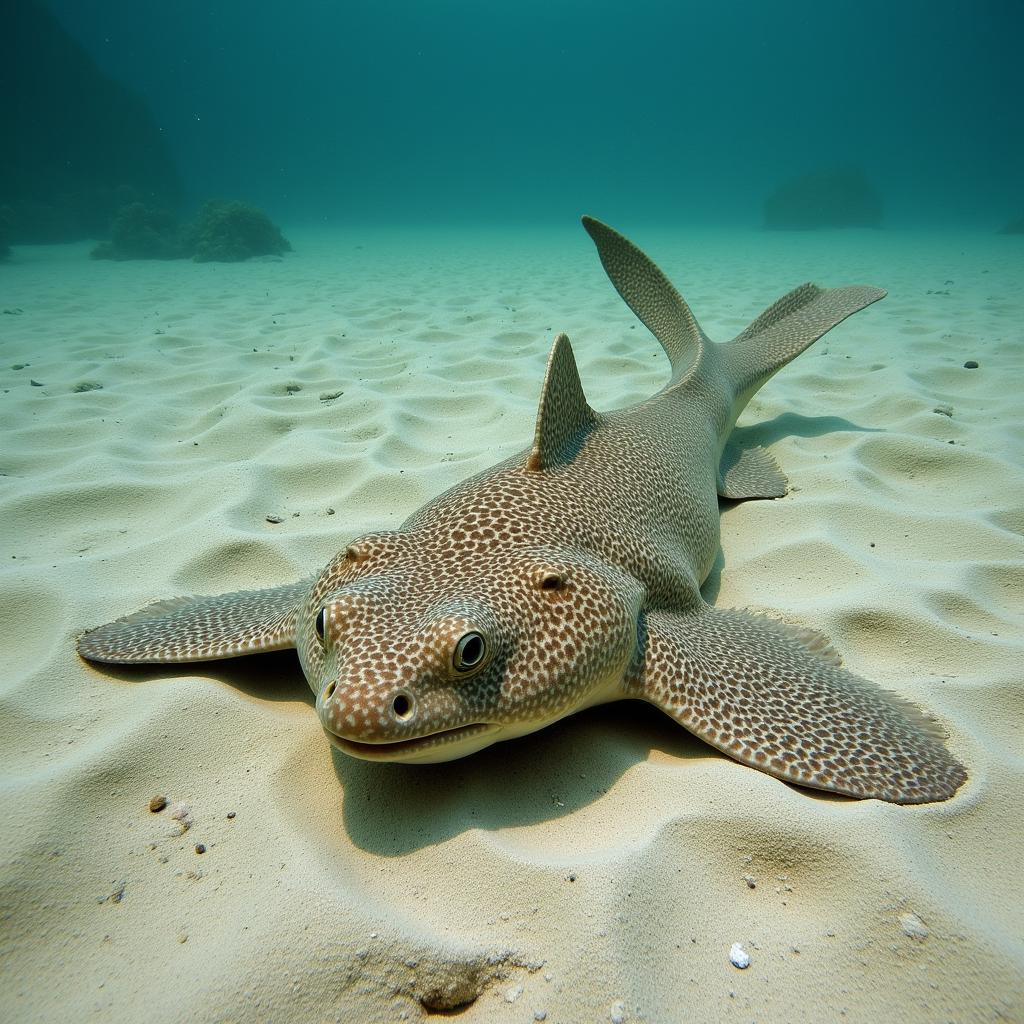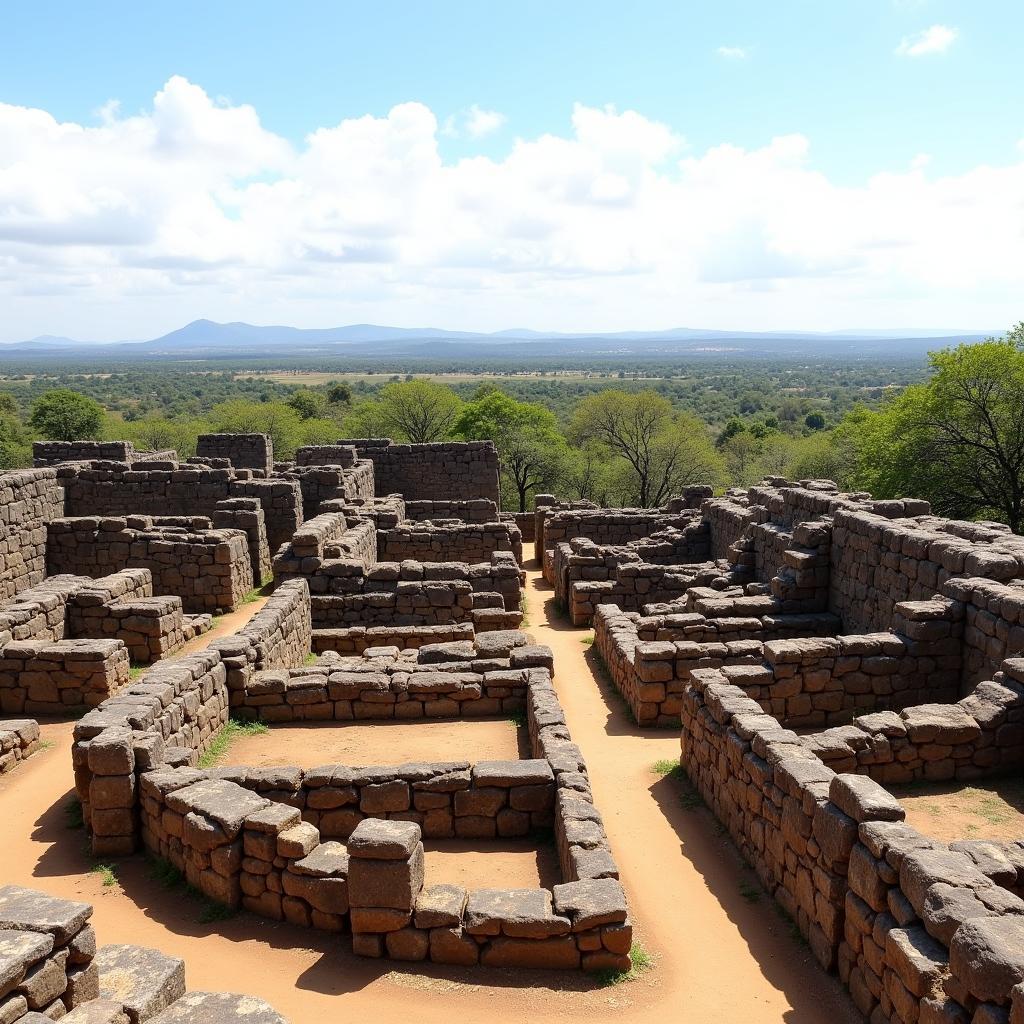Discovering the African Finfoot: A Shy Denizen of African Waterways
The African Finfoot, a remarkable waterbird, captivates with its unique blend of beauty and mystery. These elusive creatures inhabit the waterways of sub-Saharan Africa, often remaining hidden amongst the dense vegetation along riverbanks. Let’s delve deeper into the fascinating world of this shy denizen of Africa’s rivers and lakes.
African Finfoot: Master of Camouflage and Aquatic Life
African finfoots are medium-sized birds with a distinctive appearance. Their rich chestnut-colored plumage, red eyes, and lobed feet make them easily recognizable, although their secretive nature often makes sightings a rare treat. They are highly adapted to their aquatic lifestyle, with their specialized feet providing excellent propulsion underwater. Their diet primarily consists of aquatic invertebrates, small fish, and frogs, which they skillfully hunt by diving and pursuing their prey beneath the surface.
Their preferred habitat includes slow-moving rivers, lakes, and swamps with abundant vegetation, offering them ideal cover. The African finfoot is a solitary bird, except during the breeding season when pairs come together to raise their young.
 African Finfoot Diving for Prey
African Finfoot Diving for Prey
Unveiling the Secrets of the African Finfoot’s Behavior
Despite their shy nature, African finfoots exhibit fascinating behaviors. They are incredibly agile swimmers and divers, able to stay submerged for extended periods. Their lobed feet, similar to those of grebes, allow them to maneuver effortlessly underwater. When threatened, they often prefer to submerge rather than fly, further enhancing their elusiveness.
They are also known for their unique vocalizations, often described as a series of sharp whistles and clicks, which they use to communicate with each other, particularly during the breeding season.
“The African finfoot is a true master of camouflage,” notes Dr. Anika Modise, an ornithologist specializing in African waterbirds. “Their ability to blend seamlessly with their surroundings makes them incredibly difficult to observe, even for experienced birdwatchers.”
Conservation Status and Threats to the African Finfoot
The African finfoot is currently listed as a species of Least Concern by the IUCN. However, habitat loss due to deforestation and wetland drainage poses a significant threat to their long-term survival. Pollution of waterways and human encroachment on their natural habitats also contribute to the challenges they face.
“Protecting the riparian habitats that these birds depend on is essential for their continued survival,” emphasizes Professor Jabari Olufemi, a leading expert in African biodiversity conservation. “Sustainable land management practices and community involvement are crucial in mitigating the threats to this unique species.”
The Enigmatic African Finfoot: A Glimpse into Africa’s Hidden Treasures
The African finfoot, with its elusive nature and remarkable adaptations, offers a captivating glimpse into the rich biodiversity of Africa’s waterways. Learning more about these shy creatures and the challenges they face is vital for ensuring their continued existence for future generations.
FAQ
- What does the African finfoot eat? They primarily eat aquatic invertebrates, small fish, and frogs.
- Where does the African finfoot live? They are found in sub-Saharan Africa, inhabiting slow-moving rivers, lakes, and swamps.
- Is the African finfoot endangered? Currently, they are listed as a species of Least Concern, but habitat loss poses a threat.
- What are the distinctive features of the African finfoot? They have chestnut-colored plumage, red eyes, and lobed feet.
- What are the main threats to the African finfoot? Habitat loss, pollution, and human encroachment are major threats.
- How does the African finfoot hunt? They are skilled divers and pursue their prey underwater.
- What sounds does the African finfoot make? They communicate through a series of sharp whistles and clicks.
Related articles you might be interested in:
- Exploring the Diverse Birdlife of Africa
- Conservation Efforts in Sub-Saharan Africa
- The Importance of Wetland Ecosystems
Need assistance? Contact us 24/7: Phone: +255768904061, Email: [email protected], or visit us in Mbarali DC Mawindi, Kangaga, Tanzania.



